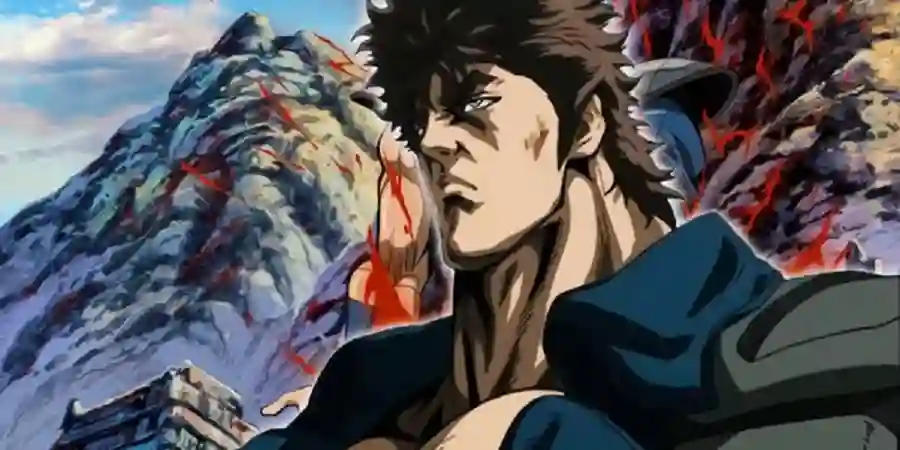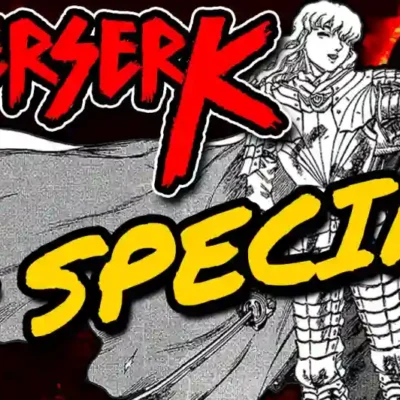Berserk, the dark fantasy epic crafted by Kentaro Miura, stands apart in the realm of manga for its unyielding commitment to gritty realism, particularly in its portrayal of battle. In the blood-soaked landscapes of Midland and beyond, Miura paints a vivid and visceral picture of warfare that transcends the boundaries of traditional fantasy storytelling. In this article, we delve into the gritty realism of battle in Berserk, exploring the ways in which Miura’s masterful storytelling and detailed artwork breathe life into the brutality and chaos of conflict.
Authentic Weaponry and Combat Techniques:
One of the hallmarks of the gritty realism in Berserk’s battles lies in Miura’s meticulous attention to the authenticity of weaponry and combat techniques. From the massive Dragonslayer wielded by the protagonist Guts to the intricately designed armor of the Knights of the Holy Iron Chain, every weapon and piece of armor is crafted with historical precision.
Miura’s dedication to accurately depicting the tools of war extends to the combat maneuvers executed by the characters. The battles in Berserk showcase a diverse array of fighting styles, from the disciplined swordsmanship of Guts to the fluid and graceful movements of the Apostles. This commitment to authenticity grounds the fantastical elements of the series in a tangible reality, immersing readers in a world where the clash of steel is as authentic as it is brutal.
Impactful Violence and Consequences:
In Berserk, the violence depicted is not gratuitous; it is a narrative device that carries weight and consequences. The impact of every strike, whether delivered by a human or a demonic Apostle, is palpable. Miura’s detailed artwork captures the brutality of combat, showcasing the visceral consequences of every sword swing, arrow shot, and magical blast.
Characters in Berserk bear the physical and emotional scars of battle. Guts, in particular, becomes a walking testament to the toll of constant warfare. His body is a tapestry of wounds, each scar telling a story of survival against insurmountable odds. This emphasis on the aftermath of violence adds a layer of authenticity to the narrative, reinforcing the gritty realism that permeates every aspect of the series.
Strategic Warfare and Tactical Brilliance:
Berserk goes beyond mere depictions of individual combat; it delves into the intricacies of strategic warfare and the tactical brilliance required to navigate the chaos of battlefields. Miura’s world-building extends to the various military factions within Berserk, each with its own distinct strategies and formations.
The Battle of Doldrey during the Golden Age Arc is a prime example of Miura’s exploration of strategic warfare. The meticulous planning, deployment of troops, and the ebb and flow of the battle highlight the author’s commitment to portraying warfare as a complex and multifaceted endeavor. This attention to strategic detail elevates Berserk beyond a simple tale of individual heroics, presenting a nuanced exploration of the broader dynamics of war.
The Human Cost of Warfare:
Berserk does not shy away from portraying the human cost of warfare. The series delves into the impact of conflict on civilians caught in the crossfire, showcasing the devastation wrought upon towns and villages. Miura paints a somber picture of the collateral damage inflicted by the ambitions of rulers and the clash of supernatural forces.
The Eclipse, a cataclysmic event central to Berserk’s narrative, serves as a harrowing example of the human cost of warfare. The massacre of the Band of the Hawk and the subsequent transformation of its members into demonic entities underscore the profound consequences of unchecked ambition and the toll it takes on the lives of those embroiled in the chaos of battle.
Diverse Array of Adversaries:
The gritty realism of battle in Berserk is not limited to clashes between human armies. Miura introduces a diverse array of adversaries, from grotesque Apostles to otherworldly creatures, each with its own set of abilities and vulnerabilities. The battles against these supernatural foes are not fantastical spectacles devoid of consequence; they are desperate struggles for survival in a world where the line between humanity and monstrosity is blurred.
Guts’ encounters with Apostles, especially during the Black Swordsman Arc, showcase the sheer horror and ferocity of these otherworldly beings. The visceral nature of these battles serves as a reminder that, in the dark fantasy realm of Berserk, the distinction between friend and foe is not always clear, and survival often demands unimaginable acts of brutality.
Environmental Realism and Atmosphere:
Miura’s commitment to gritty realism extends to the environmental aspects of battle. The landscapes where conflicts unfold are not generic backdrops; they are carefully crafted settings that contribute to the atmosphere of each engagement. From the desolate wastelands to the dense forests, the environments in Berserk influence the dynamics of battle, adding a layer of complexity to the strategic considerations of the characters.
The meticulous detailing of terrain, weather conditions, and the impact of the surroundings on combatants enhances the immersive quality of the series. It reinforces the idea that battles in Berserk are not staged spectacles but dynamic events shaped by the harsh realities of the world.
Conclusion:
Berserk’s exploration of the gritty realism of battle is a testament to Kentaro Miura’s artistic and narrative prowess. Through detailed artwork, authentic depictions of weaponry and combat techniques, and a commitment to showcasing the consequences of violence, Berserk transcends the conventions of the fantasy genre. It invites readers into a world where warfare is not romanticized but portrayed with unflinching realism, capturing the chaos, brutality, and complexity of armed conflict.
As we traverse the blood-stained landscapes of Berserk, we are reminded that the series is not merely a fantasy epic; it is a visceral exploration of the human experience in the crucible of war. Kentaro Miura’s commitment to gritty realism in battle has left an indelible mark on the manga landscape, elevating Berserk into a realm of storytelling where the clash of swords and the echoes of warfare resonate with a raw authenticity that lingers in the minds of readers long after the final page is turned.


